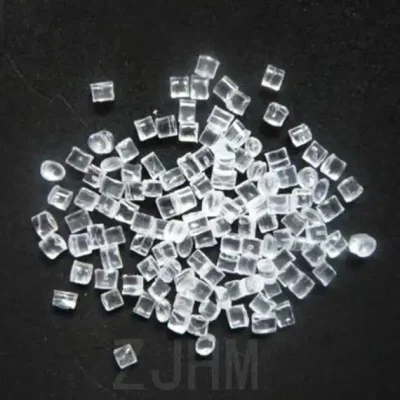-
Categories
-
Pharmaceutical Intermediates
-
Active Pharmaceutical Ingredients
-
Food Additives
- Industrial Coatings
- Agrochemicals
- Dyes and Pigments
- Surfactant
- Flavors and Fragrances
- Chemical Reagents
- Catalyst and Auxiliary
- Natural Products
- Inorganic Chemistry
-
Organic Chemistry
-
Biochemical Engineering
- Analytical Chemistry
-
Cosmetic Ingredient
- Water Treatment Chemical
-
Pharmaceutical Intermediates
Promotion
ECHEMI Mall
Wholesale
Weekly Price
Exhibition
News
-
Trade Service
When optical fiber communication can be widely used in consumer electronic products and gain consumer favor has become the focus
of attention in the transmission interface industry today.
Figure 1 The optical connector is combined with the electrical connector
In the second quarter of 2011, Sony launched the Sony VAIO Z series of laptops using Light Peak, placing the Light Peak optical module in the laptop and the bottom base (Docking), and carefully designed a terminal for optical transmission, so that high-speed optical signals can flow smoothly between the laptop and the base, and this optical connector is also cleverly designed to combine with the electrical connector (Figure 1).
So that consumers do not feel the existence of optical connectors, take the first step
of fiberization of high-speed transmission interface.
However, although the new notebook computer has the convenience of high-speed transmission, the price point of more than 3,000 US dollars still does not attract consumers, and the optical module is placed in the laptop, and the consumer directly handles the insertion and removal of the optical connector (generally the insertion and removal of the traditional optical connector, which requires trained technicians to handle), this makes the notebook computer industry very worried about the follow-up maintenance problem, obviously the early efforts of the transmission interface fiberization have not won the support of the notebook computer industry and
。
Light Peak plugging inconvenience Thunderbolt replaced it
In fact, in late 2010 and early 2011, Apple filed trademark registrations
for Thunderbolt in major countries and regions 。 Although Apple proposed the Thunderbolt trademark patent earlier than Intel (Intel), but after the cooperation between the two parties, it has now been transferred to Intel, and Intel has also obtained a trademark patent related to the Thunderbolt interface, so Thunderbolt will not become Apple's exclusive brand, through Thunderbolt technology, the industry seems to have revealed the information of abandoning Light Peak.
This avoids having consumers deal directly with the plug-in and
unplugging of optical connectors.
Figure 2 Optical connectors at both ends
Thunderbolt interface supports more than 10G transmission, and the transmission between the internal notebook to the interface has returned to the most familiar electrical transmission before, rather than making the device manufacturer feel more difficult to control optical transmission, Apple will also Thunderbolt interface as its notebook and desktop computer standard equipment, and one of the main focuses of Intel's Ultrabook is also Thunderbolt high-speed transmission capability; For consumers, plugging and unplugging at the cable end returns to simple interface plugging, and to support optical transmission, the optical module can be placed at both ends of the cable (Figure 2), and no longer need to be placed in a
laptop.
At the same time, the convenience of copper cables still makes it return to the battlefield of transmission interfaces above 10G, but copper is still limited in high-speed transmission; Even with the help of many technical developments and ICs to help process high-speed signals, the length of copper cables is still limited to 3 or 2 meters, and even copper wires are still quite difficult and there are quite a lot of challenges in mass production Thunderbolt cables, so the cost and price still need to be reduced
.
Apple launched the $49 copper Thunderbolt cable in June 2011, a 2-meter Thunderbolt active cable that is not cheap for consumers, but for those who know how to make this line, Apple does not think it is profitable
to set this price.
Sure enough, the Thunderbolt powered cables of other brands launched in early 2012 retailed more expensive than Apple, which is an unusual situation for Apple products, but it also shows that Apple and Intel are determined
to promote high-speed transmission in consumer products.
In early 2013, Apple's 2-meter Thunderbolt active cable was cut from $49 to $39, and a 0.
5-meter version was introduced for $
29.
After 1 and a half years of hard work, the price of the product is still not cheap, obviously this copper Thunderbolt active cable is still not easy to make, and the application of more than 3 meters of distance is also copper cable can not cope, and optical fiber to support 10G and more than 3 meters of distance
.
In the optical fiber version, after Light Peak was replaced by Thunderbolt (Figure 3), optical fiber communication did not fall silent, with the rise of high-quality audio and video content, consumer demand for bandwidth is increasing, driving the growth of the optical fiber communication market, promoting long-distance transmission such as passive optical network (PON) in the Fiber To The Home (FTTH) application, The application of data centers for short-distance transmission has climbed from 10G to 100G, but there is still some way to go before optical fiber communication is
popularized.
Figure 3 Schematic diagram of Light Peak and Thunderbolt evolution
Overcoming the transmission distance problem Thunderbolt is moving towards fiberization
Thunderbolt cables have to cope with transmission of more than 3 meters, and fiber optics are still the best choice
.
Nearly a year after the launch of the copper version of the Thunderbolt cable, Sumitomo first released the fiber optic version of the Thunderbolt active fiber optic cable in April 2012, and finally began to be sold on Amazon Japan in January 2013, starting at 10 meters in length
.
Unfortunately, the price of the cable remains high, and its 10-meter-long retail price is as high as 73,500 yen, which is enough to buy a high-end smartphone, which is not at all affordable, which in turn affects the competitiveness of this technology market, and is still far from
the price acceptable to the average consumer.
Since then, TDK and Corning have also launched optical fiber samples, and it is clear that optical fiber communication companies are still sparing no effort to promote the application of
optical fiber in consumers.
But when to reach a price sweet spot, so that the public can enjoy the convenience of high-speed transmission without worrying about excessive cost, will be the key
to getting consumers to embrace this technology.
The original design of Light Peak, the optical module is placed in the main control end or device (Host Device), and the use of specially designed optical connectors to connect the Host and the device is a low-cost design, but the optical module is placed in the main control or device, which increases its manufacturing cost, not every user will use it, and the relevant industry has insufficient
confidence in the control of the optical module.
Therefore, it had to retreat to the second place to move the optical module to both ends of the cable to make an optical fiber version
.
However, this change not only increases the technical difficulty, but also raises the overall cost, which hinders the marketing promotion
.
On the other hand, from Thunderbolt's Mini DisplayPort (MDP) interface, it is much smaller than the commonly used general-purpose sequence bus (USB), and the area that can be used at the back end of the interface is naturally limited.
In fact, optical fiber communication technology has never been simple, to the main control end and the device with a large amount of data information from electrical excitation into a high-speed laser signal, and coupled to a fiber thinner than a hair, through the optical fiber transmission, to the other end of the optical fiber to the optocoupler to Photo Diode (PD), and then convert the light back into an electrical signal for the main control end and the device to use, to progress to high-speed transmission and the price is close to the people is by no means overnight, the industry needs to work together
.
However, looking back at the evolution of home broadband Internet access, from the early 56K modem (Modem) to today's 100M, optical fiber plays a pivotal role in the backbone transmission part of the information superhighway, and it is believed that this technology will still be the mainstream
of the market in the future.
In mid-2012, Google launched Google Fiber in the United States with a network speed of 1GB per second, truly pulling fiber to the home for users to enjoy the thrill of 1G
.
As fiber optic technology continues to evolve, key component prices continue to decline, and mass production yields continue to increase, consumers should be around the corner to enjoy the convenience of high-speed transmission at friendly prices in the future, and relevant supply chains are gearing up to meet this market opportunity
.
When optical fiber communication can be widely used in consumer electronic products and gain consumer favor has become the focus
of attention in the transmission interface industry today.
Figure 1 The optical connector is combined with the electrical connector
In the second quarter of 2011, Sony launched the Sony VAIO Z series of laptops using Light Peak, placing the Light Peak optical module in the laptop and the bottom base (Docking), and carefully designed a terminal for optical transmission, so that high-speed optical signals can flow smoothly between the laptop and the base, and this optical connector is also cleverly designed to combine with the electrical connector (Figure 1).
So that consumers do not feel the existence of optical connectors, take the first step
of fiberization of high-speed transmission interface.
However, although the new notebook computer has the convenience of high-speed transmission, the price point of more than 3,000 US dollars still does not attract consumers, and the optical module is placed in the laptop, and the consumer directly handles the insertion and removal of the optical connector (generally the insertion and removal of the traditional optical connector, which requires trained technicians to handle), this makes the notebook computer industry very worried about the follow-up maintenance problem, obviously the early efforts of the transmission interface fiberization have not won the support of the notebook computer industry and
。
Light Peak plugging inconvenience Thunderbolt replaced it
Light Peak plugging inconvenience Thunderbolt replaced itIn fact, in late 2010 and early 2011, Apple filed trademark registrations
for Thunderbolt in major countries and regions 。 Although Apple proposed the Thunderbolt trademark patent earlier than Intel (Intel), but after the cooperation between the two parties, it has now been transferred to Intel, and Intel has also obtained a trademark patent related to the Thunderbolt interface, so Thunderbolt will not become Apple's exclusive brand, through Thunderbolt technology, the industry seems to have revealed the information of abandoning Light Peak.
This avoids having consumers deal directly with the plug-in and
unplugging of optical connectors.
Figure 2 Optical connectors at both ends
Thunderbolt interface supports more than 10G transmission, and the transmission between the internal notebook to the interface has returned to the most familiar electrical transmission before, rather than making the device manufacturer feel more difficult to control optical transmission, Apple will also Thunderbolt interface as its notebook and desktop computer standard equipment, and one of the main focuses of Intel's Ultrabook is also Thunderbolt high-speed transmission capability; For consumers, plugging and unplugging at the cable end returns to simple interface plugging, and to support optical transmission, the optical module can be placed at both ends of the cable (Figure 2), and no longer need to be placed in a
laptop.
At the same time, the convenience of copper cables still makes it return to the battlefield of transmission interfaces above 10G, but copper is still limited in high-speed transmission; Even with the help of many technical developments and ICs to help process high-speed signals, the length of copper cables is still limited to 3 or 2 meters, and even copper wires are still quite difficult and there are quite a lot of challenges in mass production Thunderbolt cables, so the cost and price still need to be reduced
.
Apple launched the $49 copper Thunderbolt cable in June 2011, a 2-meter Thunderbolt active cable that is not cheap for consumers, but for those who know how to make this line, Apple does not think it is profitable
to set this price.
Sure enough, the Thunderbolt powered cables of other brands launched in early 2012 retailed more expensive than Apple, which is an unusual situation for Apple products, but it also shows that Apple and Intel are determined
to promote high-speed transmission in consumer products.
In early 2013, Apple's 2-meter Thunderbolt active cable was cut from $49 to $39, and a 0.
5-meter version was introduced for $
29.
After 1 and a half years of hard work, the price of the product is still not cheap, obviously this copper Thunderbolt active cable is still not easy to make, and the application of more than 3 meters of distance is also copper cable can not cope, and optical fiber to support 10G and more than 3 meters of distance
.
In the optical fiber version, after Light Peak was replaced by Thunderbolt (Figure 3), optical fiber communication did not fall silent, with the rise of high-quality audio and video content, consumer demand for bandwidth is increasing, driving the growth of the optical fiber communication market, promoting long-distance transmission such as passive optical network (PON) in the Fiber To The Home (FTTH) application, The application of data centers for short-distance transmission has climbed from 10G to 100G, but there is still some way to go before optical fiber communication is
popularized.
Figure 3 Schematic diagram of Light Peak and Thunderbolt evolution
ThunderboltOvercoming the transmission distance problem Thunderbolt is moving towards fiberization
Overcoming the transmission distance problem Thunderbolt is moving towards fiberizationThunderbolt cables have to cope with transmission of more than 3 meters, and fiber optics are still the best choice
.
Nearly a year after the launch of the copper version of the Thunderbolt cable, Sumitomo first released the fiber optic version of the Thunderbolt active fiber optic cable in April 2012, and finally began to be sold on Amazon Japan in January 2013, starting at 10 meters in length
.
Unfortunately, the price of the cable remains high, and its 10-meter-long retail price is as high as 73,500 yen, which is enough to buy a high-end smartphone, which is not at all affordable, which in turn affects the competitiveness of this technology market, and is still far from
the price acceptable to the average consumer.
Since then, TDK and Corning have also launched optical fiber samples, and it is clear that optical fiber communication companies are still sparing no effort to promote the application of
optical fiber in consumers.
But when to reach a price sweet spot, so that the public can enjoy the convenience of high-speed transmission without worrying about excessive cost, will be the key
to getting consumers to embrace this technology.
The original design of Light Peak, the optical module is placed in the main control end or device (Host Device), and the use of specially designed optical connectors to connect the Host and the device is a low-cost design, but the optical module is placed in the main control or device, which increases its manufacturing cost, not every user will use it, and the relevant industry has insufficient
confidence in the control of the optical module.
Therefore, it had to retreat to the second place to move the optical module to both ends of the cable to make an optical fiber version
.
However, this change not only increases the technical difficulty, but also raises the overall cost, which hinders the marketing promotion
.
On the other hand, from Thunderbolt's Mini DisplayPort (MDP) interface, it is much smaller than the commonly used general-purpose sequence bus (USB), and the area that can be used at the back end of the interface is naturally limited.
In fact, optical fiber communication technology has never been simple, to the main control end and the device with a large amount of data information from electrical excitation into a high-speed laser signal, and coupled to a fiber thinner than a hair, through the optical fiber transmission, to the other end of the optical fiber to the optocoupler to Photo Diode (PD), and then convert the light back into an electrical signal for the main control end and the device to use, to progress to high-speed transmission and the price is close to the people is by no means overnight, the industry needs to work together
.
However, looking back at the evolution of home broadband Internet access, from the early 56K modem (Modem) to today's 100M, optical fiber plays a pivotal role in the backbone transmission part of the information superhighway, and it is believed that this technology will still be the mainstream
of the market in the future.
In mid-2012, Google launched Google Fiber in the United States with a network speed of 1GB per second, truly pulling fiber to the home for users to enjoy the thrill of 1G
.
As fiber optic technology continues to evolve, key component prices continue to decline, and mass production yields continue to increase, consumers should be around the corner to enjoy the convenience of high-speed transmission at friendly prices in the future, and relevant supply chains are gearing up to meet this market opportunity
.







